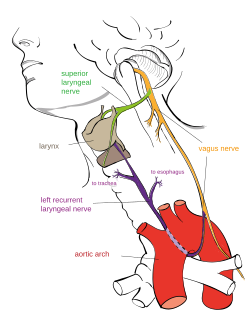On my journey away from young earth creationism, several memories stick out. Today, I want to address three of them. The first has to do with giraffes.
Growing up, my father held up that giraffe necks as evidence against evolution. “You can’t just grow another neck vertebra,” he would say. “No amount of trying to reach higher leaves would result in another vertebra.” Now yes, this argument was flawed. A giraffe could in theory obtain an additional vertebra if a portion of its genetic code was altered or duplicated. However, when I brought up the problem of giraffes growing another vertebra in an argument in college, the result was a blank stare.
You see, giraffes don’t have additional neck vertebrae. They have just as many neck vertebrae as nearly every other mammal—seven. They’re just larger. I was shocked.
This moment came back to me when I came upon a recent Answers in Genesis article about giraffes, titled “Towering Testimonies to God’s Design.” The article begins with such passages as this:
Towering tall over the African savanna, the giraffe looks as if it belongs in the circus. It strolls on stilt-like legs, and its neck parades high in the sky. But the giraffe is no comic freak of nature. It displays divine design.
Since the giraffe gives birth standing up, the newborn calf falls more than five feet to the ground. Within 15 minutes after the calf is born, it stands up on those gangly legs. In short order, the nearly six-foot calf conquers the two distinct giraffe gaits.
The first gait is a slow pace as the giraffe alternately moves its left legs and then its right legs. When fleeing from predators like lions, the giraffe can gallop for a short time at speeds up to almost 40 miles per hour. A giraffe is most at risk to a lion attack when spreading its front legs apart and bending down to lap up water.
The article goes on like this for five paragraphs, and brings up a second distinct memory: the time I took my then-boyfriend, Sean, to an Answers in Genesis conference in hopes of persuading him out of his belief in theistic evolution. I remember sitting in a talk that ran along exactly these lines—this animal is amazing, listen to all of these facts, that animal is amazing, can you even believe what it can do? To my horror, I found that not only did Sean find the talk unpersuasive, so did I.
Later in the article about giraffes, the author moves from complementing the animal for its amazing traits to arguing that it could not have evolved, but in doing so the author displays a distinct lack of understanding of evolution. I find that this is common in many popular articles by creationists.
[Evolutionists suggest] that the long neck evolved through mutation and natural selection, which favored those giraffes that could reach higher branches. Such an idea raises the question: What did the younger giraffes eat, and why do giraffes even today often eat at shoulder height and below?
Is this really a serious argument?!
How is it not obvious that being able to eat all levels of leaves would offer a wider range of feeding options than being able to eat only some levels of leaves? I am taller than many women. This is an advantage when I need to reach something on a particularly high shelf—but I still get things out of regular-height shelves all the time. Being tall doesn’t mean I don’t also bend down to get things from low shelves!
More importantly, the proposed progression from short to long-necked giraffes is absent from the fossil record.
The Institute for Creation Research article linked as evidence for this claim states that there are medium-neck giraffe fossils, flatly contradicting this claim. The ICR article simply claims that this medium-neck giraffe fossil is evidence of variation within a kind, not that it does not exist. As it happens, not only are there intermediary fossils, scientists also have a pretty good understanding of giraffe evolution.
But then, it’s easier to assert evolutionary ignorance than it is to grapple with actual evolutionary arguments. And this is something we see again, and again, and again.
Evolutionists also encounter a design dilemma for the evolution of a long neck. That six-foot neck requires an intricate blood vessel system to maintain proper blood pressure between the heart and brain. A giraffe bending its neck down to drink water is a marvelous display of design. The 25-pound heart that pumps blood way up that neck against gravity suddenly pumps down with gravity, which should cause the delicate brain to explode. But the blood vessels are uniquely designed with reinforced walls, bypass valves, a cushioning web, and sensor signals to moderate the pressure when the giraffe bends its neck down.
The reverse of this intricate system happens when the giraffe raises its head so that the pressure is regained and the giraffe doesn’t pass out. In addition, the tight skin on giraffe legs has been compared to an astronaut’s G-suit, because it prevents high blood pressure from pressing blood out of the capillaries.
Ken Ham penned the problem for evolutionists:
How many giraffes blew their brains to pieces when bending down—how many passed out as they lifted their heads, becoming food for the lions—until the special features somehow evolved? It’s obvious that the very first giraffes had to have these special features right from the beginning. If not, they wouldn’t have survived to pass them on to their offspring!
Um. No. This is not how any of this works.
It’s not as though these features had to develop one at a time. Having a slightly longer neck would only have been an advantage to a giraffe (enabling it to better pass down its genes) if it was able to handle the increased blood pressure needed, etc. The assumption here that an animal could evolve only one new trait at a time is juvenile. Of course these things would have developed together.
What you see here is an utter lack of attempt to understand or engage with the actual evolutionary literature on giraffes.
Young earth creationist beliefs were central to my belief system, and I fought tooth and nail to retain these beliefs. As I did so, I found that organizations like AIG make claims like those above without acknowledging that evolutionary scientists have proposed solutions to the problems they raise, much less grappling with these solutions. I was bowled over as I found, again and again, that the questions AIG raises in articles like these have been answered.
One last memory. As I read the Answers in Genesis article on giraffes quoted from above, I was struck by an absence—there is no mention of the recurrent laryngeal nerve. In mammals, this nerve travels from the brain to the larynx, but on the way, it loops under the aorta. Here is what it looks like in humans:

What’s interesting is that it does the same thing in giraffes:

This makes no sense if you assume young earth creationism—but complete sense in light of evolutionary theory. I was fascinated by this nerve when I first learned about it, while in college, because this was never mentioned in any of the creationist literature I had read. Creationist literature holds up creatures like the giraffe to point to “evidence for design” while leaving out evidence for poor design.
I used to find creationist literature so convincing, as a sheltered homeschooled evangelical teen. Today, I can see it for what it is—blatant unscientific propaganda. Those who will find it convincing are those who are unfamiliar with the underpinnings of evolutionary science, those who only read about evolution filtered through creationist literature, and those predisposed to believe anything that purports to be “biblical.” And such I once was.
I have a Patreon! Please support my writing!















